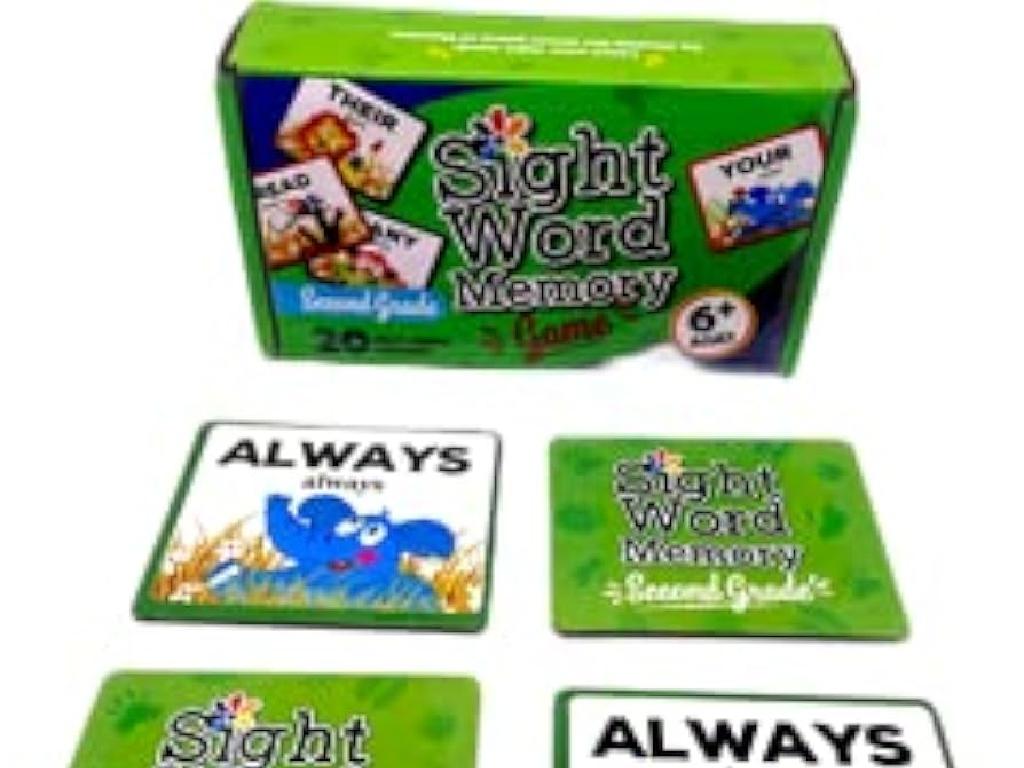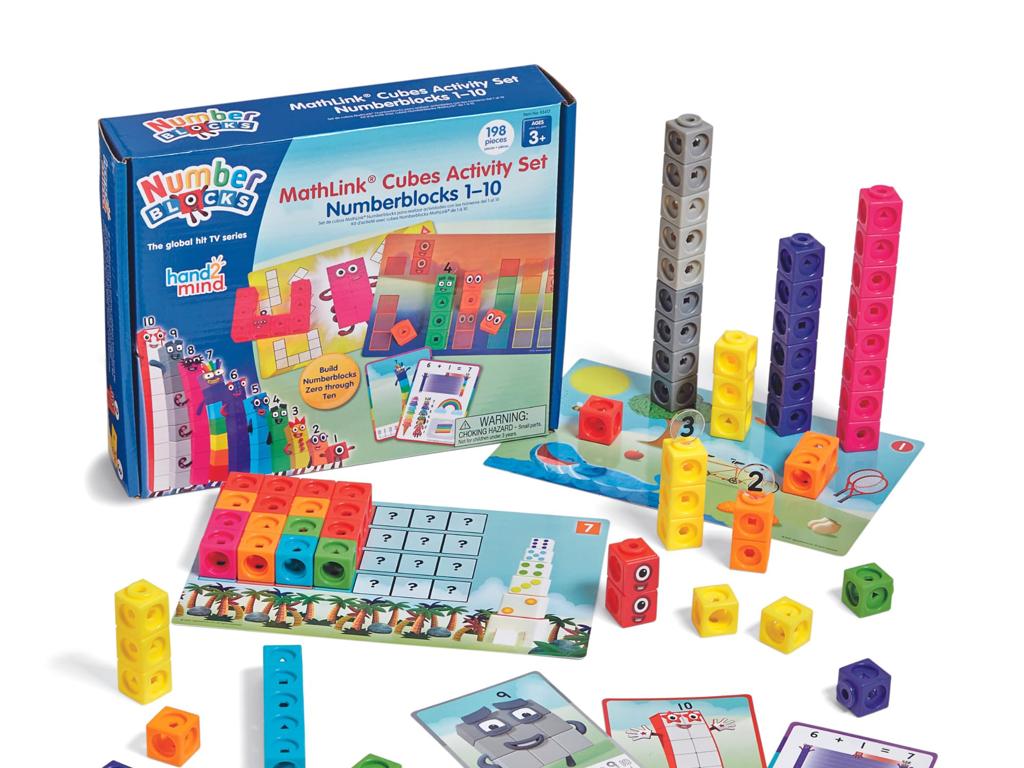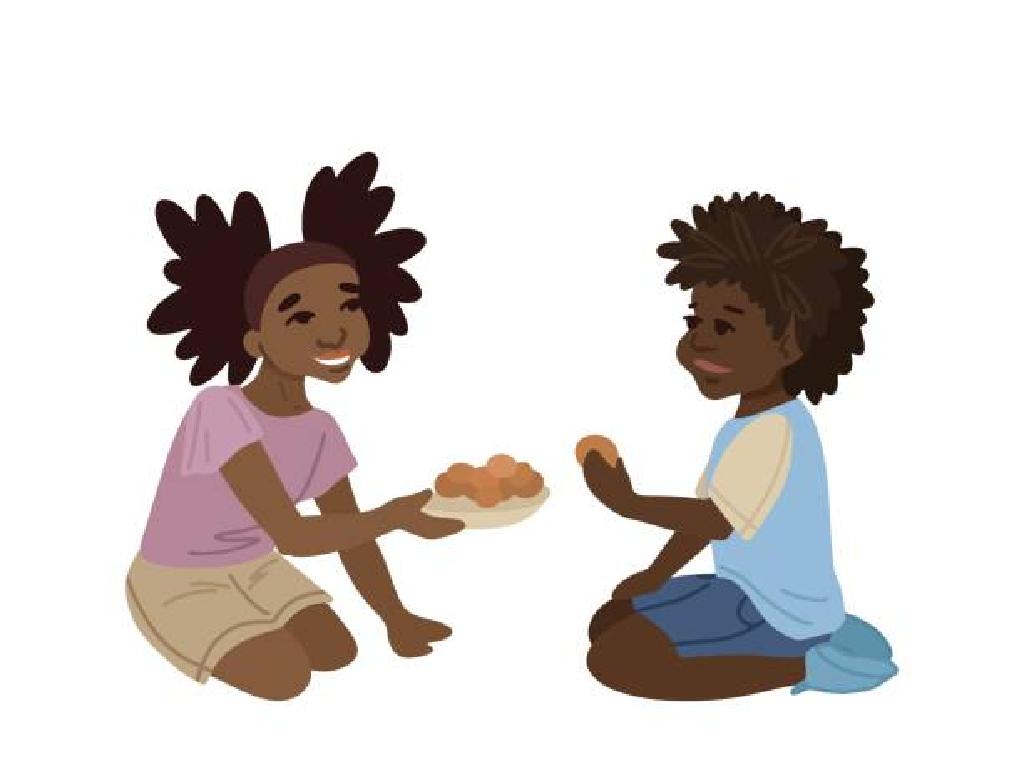Add A Multiple Of Ten And A One-Digit Number
Subject: Math
Grade: First grade
Topic: Addition: Two Digits
Please LOG IN to download the presentation. Access is available to registered users only.
View More Content
Welcome to Addition!
– Greet the class with enthusiasm
– Today’s topic: Adding numbers
– Focus: Add a multiple of ten to a one-digit number
– Examples: 10+3, 20+7, 30+5
– Let’s practice and have fun!
– We’ll use games and activities for practice
|
Begin the class with a warm welcome to set a positive tone for the lesson. Introduce the concept of addition as a way of putting numbers together to find out how many there are in total. Explain that today’s focus will be on adding multiples of ten, such as 10, 20, 30, etc., to single-digit numbers, like 1, 2, 3, etc. Use simple examples on the board to demonstrate the concept. Engage the students with interactive activities such as number line jumps or manipulatives like blocks or counters to help them visualize the addition process. Encourage participation and make the learning experience enjoyable with games that reinforce the concept. The goal is for students to understand the basics of addition and feel confident in their ability to add a multiple of ten to a one-digit number.
Adding Multiples of Ten and One-Digit Numbers
– What are multiples of ten?
– Numbers like 10, 20, 30 are multiples of ten
– Counting by tens: 10, 20, 30…
– Practice counting: 10, 20, 30, 40, etc.
– All multiples of ten end in zero
– Notice the zero at the end of each multiple
– Adding ten to one-digit numbers
– Example: 10 + 5 = 15, 20 + 3 = 23
|
This slide introduces first graders to the concept of multiples of ten and how to add them to one-digit numbers. Start by explaining that multiples of ten are the building blocks of our number system and are simply the result of counting by tens. Use visual aids like number lines or counters to help students recognize the pattern that all multiples of ten end with a zero. Then, demonstrate how to add a one-digit number to a multiple of ten using simple examples and manipulatives if possible. Encourage students to notice that when adding a one-digit number to a multiple of ten, only the ones place changes.
Adding Multiples of Ten to One-Digit Numbers
– Understanding one-digit numbers
– Numbers from 0 to 9 are one-digit numbers
– Examples: 1, 2, 3, 4, 5, 6, 7, 8, 9
– These are the building blocks of all numbers
– Recognize numbers with one digit
– Practice adding to multiples of ten
– Example: 10 + 5, 20 + 3, 30 + 7
|
This slide introduces first graders to the concept of one-digit numbers, which are the numbers from 0 to 9. These numbers are the foundation for understanding larger numbers and basic arithmetic. Provide clear examples of one-digit numbers and emphasize their simplicity as numbers with only one digit. Then, transition to showing how these numbers can be added to multiples of ten, such as 10, 20, 30, etc. Use visual aids or manipulatives like blocks or counters to demonstrate this concept if possible. Encourage students to practice with different combinations and prepare simple addition problems for them to solve.
Let’s Add Them Together!
– Easy addition with tens
– Example: 10 + 3 equals?
– 10 plus 3 makes 13
– Practice on the board
– Use different examples like 20 + 4, 30 + 2
– Work together as a class
|
This slide is aimed at teaching first graders the concept of adding a multiple of ten to a one-digit number. Start by explaining that when we add a multiple of ten to a one-digit number, the one-digit number just gets added to the end of the ten number. For example, with 10 + 3, we simply put the 3 after the 10, making it 13. Use the board to practice this concept with the class, encouraging participation and trying different combinations like 20 + 4 or 30 + 2. This will help students understand the pattern and gain confidence in their addition skills. Make sure to praise their efforts and correct mistakes gently, ensuring a positive learning environment.
Visualizing Addition with Sticks
– Start with ten sticks
– Add one more stick
– Now you have eleven sticks
– Count all the sticks
– Adding gives us a new total
– Visual aids make addition clear
|
This slide is aimed at helping first graders visualize the concept of addition by using physical objects like sticks. Start by showing them ten sticks, then add one more and ask the students to count the total number of sticks. This concrete example helps them understand that adding one to ten gives eleven. Emphasize the importance of visual aids in learning new concepts in math, as they make abstract ideas more concrete. For the next class, consider bringing in actual sticks or using other objects like blocks or beads to help students practice this concept of addition.
Practice Time: Adding Tens and Ones
– Let’s solve addition problems
– I’ll give you problems to work on
– Example: 20 (a multiple of ten) + 4 (a one-digit number)
– Remember to count one by one
– Use your fingers or draw objects to help count
– Check your work when finished
– Make sure your answer makes sense
|
This slide is designed to engage first-grade students in a hands-on addition activity. Provide them with a series of problems that involve adding a multiple of ten to a one-digit number, such as 20 + 4, 30 + 3, etc. Encourage them to use physical objects like counters or to visualize the numbers to aid in counting. Remind them to take their time and count carefully. After they have completed the problems, have them double-check their work to ensure accuracy. This activity will help reinforce their understanding of basic addition and the concept of place value. Possible activities could include using blocks to represent tens and ones, drawing pictures to visualize the problems, or using a number line to count up from the multiple of ten.
Adding with a Story
– Create a story for addition
– Example: 20 apples + 2 more
– If starting with 20 apples and buying 2, the total is 22 apples
– Stories make math fun
– Practice with different numbers
– Try using 30 cars + 3, or 40 balls + 1 in your story
|
This slide is designed to teach first graders how to add a multiple of ten to a one-digit number through storytelling. By contextualizing math problems within a story, students can visualize the concept and understand the practical application of addition. The example provided uses apples to make the problem relatable. Encourage students to create their own stories using items they like or are familiar with. This approach helps to solidify their understanding of addition and makes learning an interactive and enjoyable experience. During the next class, ask students to share their stories and solve the addition problems they’ve created.
Class Activity: Number Line Hop
– Start at zero on the number line
– Hop to the multiple of ten
– If I say ’20’, hop to 20
– Add a one-digit number with more hops
– If I then say ‘4’, do 4 small hops forward
– Reach the final number and smile!
|
This activity is designed to help first graders understand addition involving multiples of ten and one-digit numbers in a fun and interactive way. Before starting, ensure that each student understands how to identify multiples of ten. Place a number line on the floor where students can easily hop on it. As you call out a multiple of ten, guide the students to hop to that number. Then, when you call out a one-digit number, they should do the corresponding number of small hops forward. This will help them visualize the addition process. Have a few different scenarios ready, and ensure that each student gets a turn. Praise their efforts and correct gently if they make a mistake. This kinesthetic activity supports their understanding of basic addition and number sequencing.
Review: Adding Multiples of Ten
– Adding tens and ones is fun!
– Let’s solve 30 + 5 together
– What do we get when we add 30 and 5?
– Practice makes perfect
– Keep practicing adding with different numbers
– Great work in today’s lesson!
|
This slide is meant to review and reinforce the concept of adding a multiple of ten to a one-digit number. Start by emphasizing how fun and simple it is to add tens and ones. Ask the class to participate by solving 30 + 5 as a group to encourage engagement. Praise their efforts and remind them that practice is key to mastering this skill. Congratulate the students on their hard work today and encourage them to continue practicing at home. For the next class, prepare a set of similar addition problems for further practice.
Homework Time: Adding Around Us
– Practice adding with family
– Find items to add at home
– Maybe count forks and spoons or add the number of windows and doors
– Record your addition results
– Write down or draw the things you added together
– Share your findings in class
|
This homework activity is designed to reinforce the day’s lesson on adding multiples of ten to one-digit numbers. Encourage students to involve their family members in finding everyday items that can be counted and added together. Suggest that they look for groups of ten items, like ten blocks or ten pencils, and then add one more item to them. Remind them to write down their findings or draw pictures to help them remember what they added. The next day in class, allocate time for students to share their experiences and what they added at home. This will help them see the practical application of addition in their daily lives and build their confidence in their math skills.





